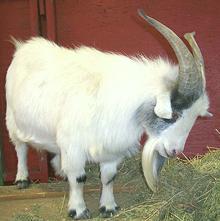
SAFARI
Users
General & History
Goats thrive under even worse conditions than sheep, so are the favored meat for people from rugged terrain. Goat is at least a major meat, and may be the primary meat of a number of regions.
- India
- Mexico
- Caribbean
- Australia
- Africa, all dry regions
- Near and Middle East
India:
Goats are the predominant meat animals in India, because they do not compete with humans for food and can survive under conditions other animals cannot tolerate. When the British ruled India they disliked the idea of eating goat, so they called goat meat "mutton". Any recipe from India that specifies mutton probably actually means goat.Religion:
Judaism and Islam allow the eating of goat so long as it is ritually slaughtered in the prescribed manner. The only religions that forbid goat are those that forbid eating animals of any kind.Cooking Goat
Goat has a flavor somewhat closer to lamb than to beef. It is, in general, very good eating, and I prefer it to beef in stew type dishes. Also, it isn't smelly while cooking the way lamb is.
Goats are more athletic than sheep, The meat is leaner and includes a lot of connective tissue. For this reason it needs to be cooked longer than lamb. Most goat meat sold here in Los Angeles needs to simmer between 2-3/4 and 3-1/2 hours before it's tender. Goat from more primitive regions may need more than that.
While the meat itself is lean, goats have a stiff blanket of fat under the skin, so you will get a fair amount of fat with most cuts. The shank end of the leg will have the least.
Goat is bony, but the bones and trimmings (toss in the fat too) make an excellent soup stock for use in recipes. Simmer at least 4 hours, 6 or 8 is better, strain and defat using your gravy separator.



